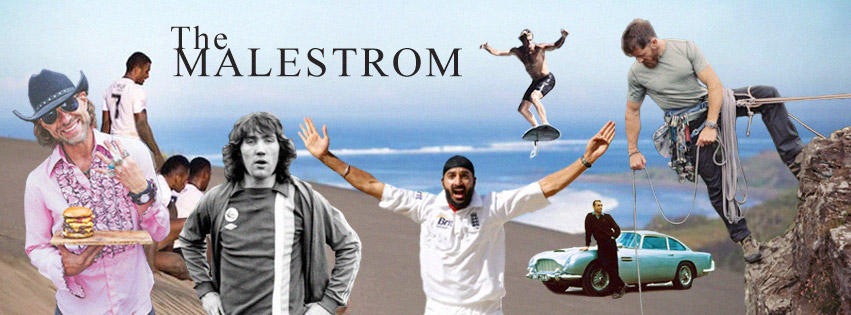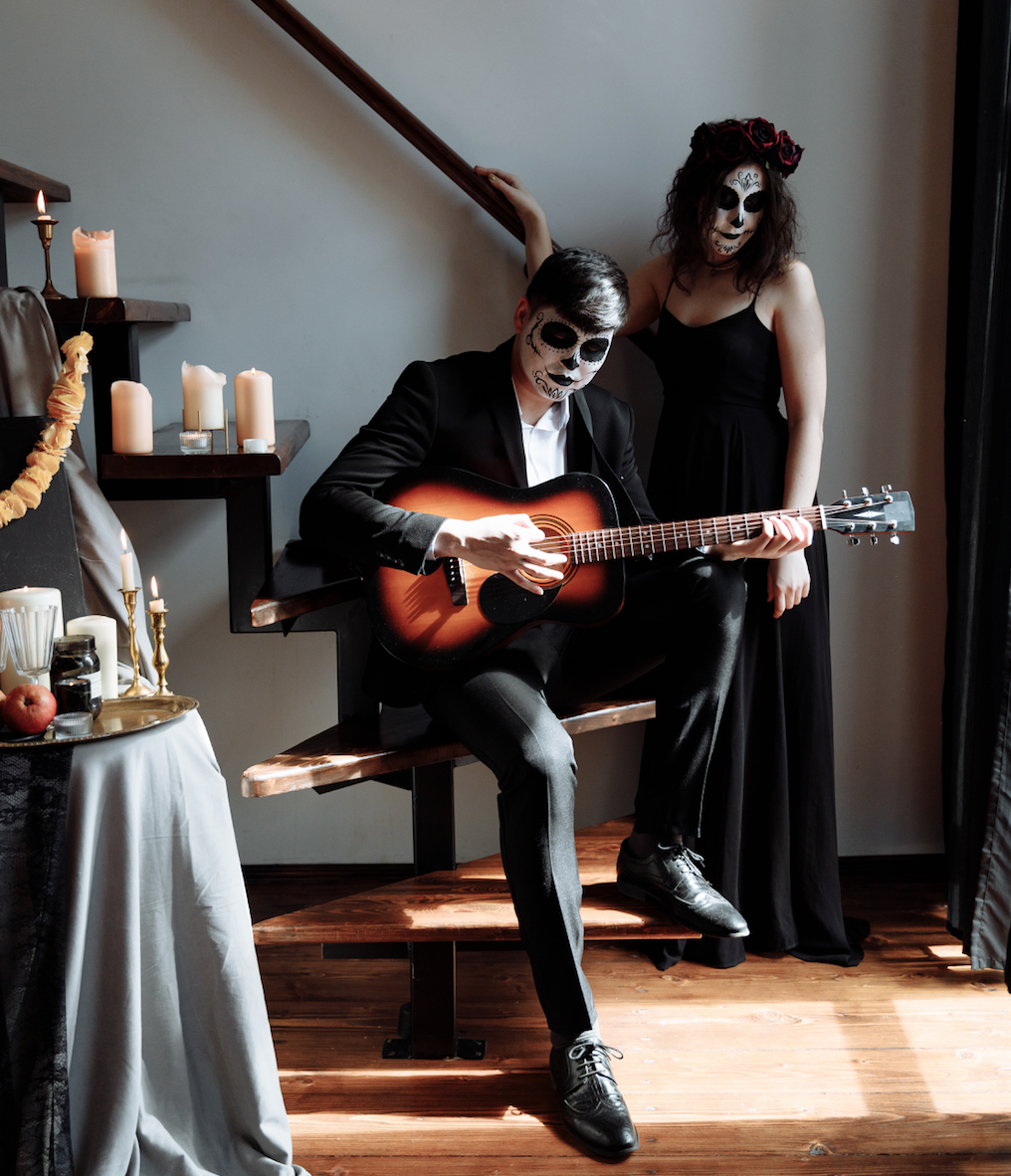There are few things more important in a horror movie than a great soundtrack. Music that can transform a scene into a nail-biting, terror-inducing moment. Imagine Michael Myers relentlessly pursuing Laurie Strode without John Carpenter’s minimalist driving synth or the shower scene in Psycho without the design of Bernard Herrmann’s high, shrieking, stabbing strings.
Both go together like hand in glove and any other music attached to that action would be unthinkable. Here we look at some of our favourite horror soundtracks and scores from over the years that have left us spellbound and spooked in equal measure.
The Lost Boys (1987)

Along with its classic score filled with orchestral arrangements, cult vampire flick The Lost Boys has a kick ass 80s soundtrack. This tale of tortured souls, with pin-up good looks benefits from tracks by INXS & Aerosmith, and a brilliant theme song that comes in the shape of goth classic ‘Cry Little Sister’ by Gerard McMann.
McMann used industrial sounds and a children’s choir to produce a suitably haunting track. Perhaps top of the list though has to go to Echo and the Bunnymen’s inspired cover of The Doors song ‘People Are Strange’, which simply gives us shivers.
The Wicker Man (1973)

The creepy community of Summerisle in the Scottish Highlands in Robin Hardy’s unforgettable pagan horror The Wicker Man lends itself perfectly to the magical English folk soundtrack that underpins the action.
Much like the island itself, eeriness lurks at the edge of each song. New Yorker Paul Giovanni and the Magnet (a band made up of session musicians created for the recording of the soundtrack) were responsible for all the songs such as ‘Corn Riggs’ which uses Robert Burns ballads to great effect.
The highlight is ‘Willow’s Song’ which Britt Ekland sings like a siren spell in her attempt to seduce straight-laced policeman Edward Woodward. This hauntingly beautiful tune has unsurprisingly been covered by a number of artists like The Sneaker Pimps. The late, great Christopher Lee, who played the Laird of Summerisle said the album was “probably the best music I’ve ever heard in a film”. High praise from cinema’s finest Dracula.
Halloween (1978)

If there was ever a soundtrack to instill extreme anxiety in a viewer it’s that of horror classic Halloween by John Carpenter. Not just content with being a great director Carpenter scored a number of his films. This one is perhaps his finest hour, with many having borrowed heavily from it over the years, but it has never been bettered since its 1978 release.
The 5/4 time signature that was used as the basis for the ever so eerie piano melody in the main theme, was originally taught to him on bongo drums by his music professor Father when he was a teen. He makes use of minor keys on synth to create the jarring, urgent feel, usually when Myers is stalking a victim.
Piercing stabs of the keyboards were used to great effect for what Carpenter has described as “cattle prods”, to make audiences jump out of their seats. Not bad for just three days work.
It Follows (2014)

Talking of films borrowing from Halloween, It Follows is clearly sonically inspired by the slasher classic with its retro feeling, synth-heavy score. Electronic musician Disasterpeace is the man responsible for creating the sinister sounds that bring the intended feeling of panic to this clever film about a curse passed on through sex that leads to… let’s just say bad things.
Known for his sound design on video games, Disasterpiece has used similar signposts of sound to let the viewer know when something is going to happen. When an ear piercing klaxon sounds we know something bad is just around the corner, likewise with the booming drum, although some of these signposts do lead to dead ends to ensure we’re kept firmly on the edge of our seats. The end result is an ominous, creepy soundtrack that delivers dread.
The Exorcist (1973)

There’s lots of great music on The Exorcist soundtrack, but it will be forever associated with Mike Oldfield’s prog rock tune ‘Tubular Bells’. Who would have known it would go on to strike such fear into people’s hearts?
It could have all been so different of course if it wasn’t for director William Friedkin being so notoriously difficult. He was struggling to find a composer he could get on with (he literally threw the score he commissioned Lalo Schifrin to write out of a window) when he stumbled upon Oldfield’s haunting tune.
Speaking to The Daily Telegraph in 2014, Oldfield said much of Tubular Bells’ success was down to its unusual signature. “Most music is in 4/4 time, but that curious little figure at the beginning is in 15/8. It’s like a puzzle with a little bit missing. That’s why it sticks in the brain. And that’s why it worked so well as the soundtrack to The Exorcist – with that little bit missing everything is not quite right.”
Hereditary (2018)

One of the finest horrors of this year and set to be a film that lives long in the memory is Hereditary. The impact of the film is in many parts down to the shadowy score by avant-garde composer Colin Stetson, which at times can be quite beautiful, then foreboding, before it builds and builds to the movie’s climax.
Previously best known for his work with Arcade Fire, the musician utilises droning bass saxophone, with off-key clarinets along with any other instrument that came to hand that can produce a terrifying noise. Stenson has said that his soundtrack mirrors “the gradual progression into uncertainty and madness”, a statement we can’t argue with.
It’s a unique piece of sound work that lifted what would have been a very good film, into what we beleive is a great one.
Halloween III: Season of the Witch (1982)

We’re not going to get into the whole Halloween III wasn’t a real film in the series as it had no relation to the other films and no Michael Myers. Importantly what it did have was another fittingly creepy score by John Carpenter and Alan Howarth filled with sinister synths as well as strange building electronic beeps.
Notably, given how typically Carpenter this score is, he even commented to Howarth, “Alan, this is going to be really easy – all we’ve got to do is rip ourselves off”.
The other tune, many who’ve seen the film will remember, is the repeated Silver Shamrock commercial that is pivotal to the film’s plot. The jingle, based on the nursery rhyme London Bridge is Falling Down, is downright creepy and the constant repetition creates a growing sense of unease nay madness.
Suspiria (1977)

Horror god Dario Argento had previously worked with prog rockers Goblin on his film Deep Red (Profondo Rosso) to dramatic effect, but it was their collaboration on the bone-chilling Suspiria that was to be their greatest.
Given three months to write a soundtrack the musicians outdid themselves, coming forth with a demonic collection of chaos that is at times awe-inspiring. Just listening to the witchy cackles deftly sewn within tracks, you almost question sometimes if they’re actually there.
It’s an in your face soundtrack that uses an experimental, eclectic mix of instruments to set a pitch black tone for one of the best horrors committed to film. The rebooted Suspiria is soon to be released, with a well-received soundtrack coming from the talented Thom Yorke, but it’ll be hard to beat the lurid thrills of the original and those pulsating, insidious tunes from Goblin.
Click the banner to share on Facebook



